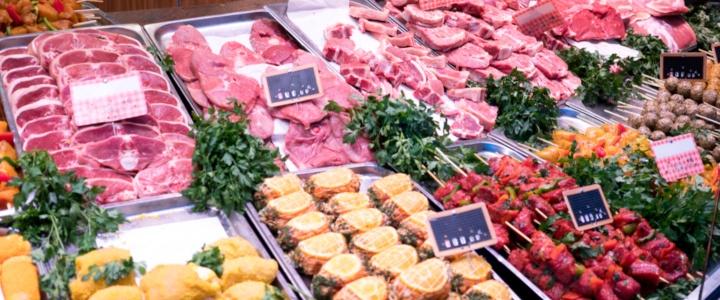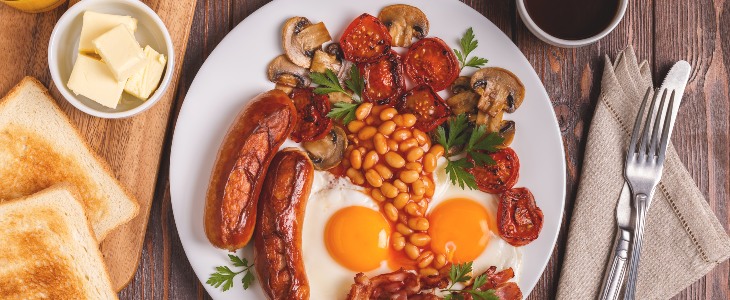How Covid-19 is affecting our meat eating habits
The national lockdown has brought sweeping and dramatic changes to everybody’s lives - the most draconian that many of us have ever experienced. This has brought about an according change in the way we live, and specifically the way we eat. According to a recent article in the Telegraph, spending at local butchers, bakers and grocers has risen by a third during the crisis, and that’s been backed up by a new report from Kantar Worldpanel, an international company dealing in consumer knowledge and insights based on continuous consumer panels. Here, we sum up some of their most significant findings.
The biggest changes
Normally, our working days means that the division between eating out and eating at home is fairly balanced, especially as relatively little of the British workforce goes home to eat lunch. However, with the nationwide closure of all non essential businesses in the UK lockdown, the number of meals we’re eating at home has risen exponentially. By the end of the crisis, it’s expected to number somewhere in the region of 503 million meals. Experts expect that lunchtime meals will account for the majority of these. What’s more, estimates suggest that even if lockdown measures are slightly relaxed, this is still 304 million in-home ‘occasions’ than there would be in normal times.
The sheer size of the number of meals eaten at home means that all categories of food, from dairy to meat to vegetables, are expected to achieve significant growth for the duration of the crisis, with the respective rises ranging from 20% to 72%. The dynamics of how we eat, too, are expected to have a knock-on effect of what we choose to eat, as many meals become even more family centric than traditional.
Breakfast
So far, we’re not eating significantly more than we normally would in the mornings, but what’s on our plates may well be changing. This is largely because families are finding more time to congregate and eat communal meals without the normal school run and work commute to take up their time. The popular British fry up is becoming more of a frequent staple, and this brings with it a boost to the pork sector, with bacon and sausages also featuring more prominently on the menu. Normally these sorts of breakfasts are reserved for Saturday and Sunday mornings, but British butchers may well find an increased uptake of them during the week.
Lunchtimes
Sliced and pre-cooked meats are on track to dominate the meat sector, featuring in an additional 35 million more meals a week, with ham featuring most prominently. 91% of this growth is set to be at lunchtime (so yes, lots of people are still going to be having sandwiches!). Pork is another popular lunchtime meat, with 38% of its estimated four million meals set to be eaten around the midday mark. Lamb is also set to see an increase of around 1200,000 more meals, making up about 38% of its estimated total 3 million increase.
Evenings
Although greater numbers of British people are becoming more experimental in their cooking (especially since nationwide panic buying resulted in more limited ingredients for a little while), the experts at Kantar agree that the majority of the population still isn’t hugely likely to attempt to replicate meals they would have eaten in restaurants or bought from shops. Therefore, we’re likely to find that it’s the simple ingredients that will sell the best, used for Italian meals, stews, and other hearty meals that that are filling, and good value for money.
Now, we’ve already touched upon lamb and pork with regards to lunchtime meals above - now let’s look at it from the evening meals angle. Evening meals are expected to account for around 61% of pork’s 4 million strong additional home dinners, and lamb is expected to be a fixture of around 1.5 million more evening meals, making up about 49% of its 3 million increase. Meanwhile, mince is another handy basis for a whole host of delicious homemade dishes, which goes some way to explaining its predicted rise of up to 4.5 million meals more per week (account for around 75% of its 6 million total).

Sales of fresh beef are set to experience the biggest surge due to the crisis, and will feature in 10 million more meals per week. Evening meals will be about 70% of this growth. Poultry has long been a staple of the British public’s diet too, and is expected to see a significant rise of an additional 16 million meals.
As we move further into spring, the brighter weather is also expected to influence a seasonal rise in certain types of food. For example, greater numbers of customers may seek out burgers and sausages for impromptu backyard barbecues, especially as it may help them to enjoy the sunshine in lieu of parks and open spaces while in lockdown.
In this unprecedented time, customers will also be increasingly discerning of who they get their food from, especially since many will be keen to avoid the relatively crowded environments of supermarkets. As more and more turn to local butchers, it presents a valuable opportunity to reinforce the quality of your products and the depth of your specialist expertise and passion, which may well translate into increasingly loyal customers once lockdown measures are lifted. It’s also important to demonstrate your commitment to current social distancing measures, and highlight methods that you’re taking care to keep your customers safe - even if that’s something as simple as enforcing a one-in, one-out policy, and markings on the floor for social distancing purposes.
And if you’re looking for quality butchers equipment to help you keep up with the increased demand, that’s exactly how we can help at Butchers Equipment Warehouse. Our large range of products spans from butchers knives and cleavers to butchers machinery and sausage fillers, making us your one-stop shop for all butchers equipment. You can browse it all right here on our website, or if you’ve got any questions or need any advice, you can always give us a call on 01254 427761.





